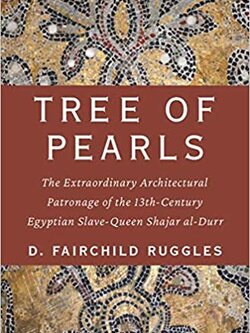
The woman known as “Tree of Pearls” ruled Egypt in the summer of 1250. A rare case of a woman sultan, her reign marked the shift from the Ayyubid to the Mamluk dynasty, and her architectural patronage of two building complexes had a lasting impact on Cairo and on Islamic architecture. Rising to power from slave origins, Tree of Pearls—her name in Arabic is Shajar al-Durr—used her wealth and power to add a tomb to the urban madrasa (college) that had been built by her husband, Sultan Salih, and with this innovation, madrasas and many other charitably endowed architectural complexes became commemorative monuments, a practice that remains widespread today. This was the first occasion in Cairo in which a secular patron’s relationship to his architectural foundation was reified through the actual presence of his body. The tomb thus profoundly transformed the relationship between architecture and its patron, emphasizing and emblematizing his historical presence. Indeed, the characteristic domed skyline of Cairo that we see today is shaped by such domes that have kept the memory of their named patrons visible to the public eye. This dramatic transformation, in which architecture came to embody human identity, was made possible by the sultan-queen Shajar al-Durr, a woman who began her career as a mere slave-concubine. Her path-breaking patronage contradicts the prevailing assumption among historians of Islam that there was no distinctive female voice in art and architecture.